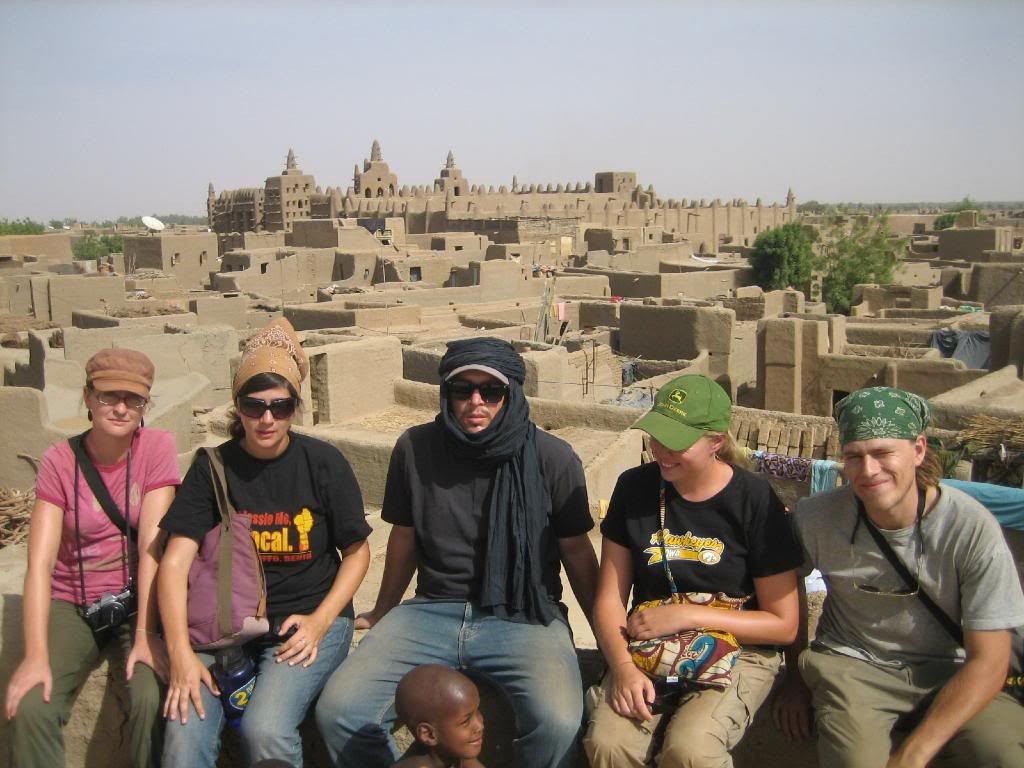After some stateside R&R, I am Back in Bamako. I’ve actually been so for about two months, and during this time have had no shortage of activities and thoughts to write about; rather, the bustle of Bamako has made it hard to find a time and calm mind to sit down and think. Notwithstanding, a couple weeks ago I had an opportunity that I can’t pass up blogging about.
Malick Sidibé is probably one of Mali’s most celebrated artists, and surely its most famous photographer. Strictly speaking one would classify Sidibé’s photography as studio and candid portraits, but his work is so refreshingly different from what Africans consider portrait photography, and from Western conceptions about African art and artistic expression. Since the 1960s Malick has made his mark with his ability to intuit and capture the emotions and self-expression of Malians, whether they be on a studio stage or at party, in prepared pose or candid dance. Independence and freedom; energy and movement; cultural tension; self-expression and imagination; joy and affection; authentic portrayal. Such are the motifs that run through Malick’s photographs.
 Above: One of Sidibe's most recognizable "on the scene" shots
Above: One of Sidibe's most recognizable "on the scene" shots
Below: One characteristic of his Sidibé’s studio work is his tendency to “play” with the expectations of his viewers by capturing more than what should typically be in a studio shot. Often the backdrop will end to expose a bare wall; the platform stops at the bottom of the image and you see the cement floor; often the gazes and attention of the subjects are very obviously fixed on something outside the frame. All this as a gesture to authenticity, and as if to say that you that you can’t put people—above all Malians—in a box.

A couple weeks ago I and some friends were able to get an appointment to have some studio shots taken by Sidibé. Although today Malick is over seventy years old, he still keeps a studio in Bamako: surprisingly inconspicuous and unapologetically “Malian” in appearance and everything else. After waiting a couple hours beyond our rendez-vous time, the vieux Sidibé finally showed up, cane in hand, dressed dapperly in crisp Malian Bazin, wearing the smirk of a playful artist.


Above: Malick in action.
Our photo shoot lasted only about 20 minutes. Although all of us had given some thought as to how we wanted to memorialize ourselves before Sidibé’s camera, once Malick entered his studio he took a natural but unimposing command of his space and subjects, and suggested unique poses for each of his three visiters. How he came up with each is beyond me, but for the man whose work and expertise is so aptly captured by the bambara phrase “i ka nje tan” (“you look good like that”), who would argue?
Below: Our shots. While waiting for the Sidibé’s arrival, we took advantage of the time and laid back atmosphere of Chez Malik to practice our poses.







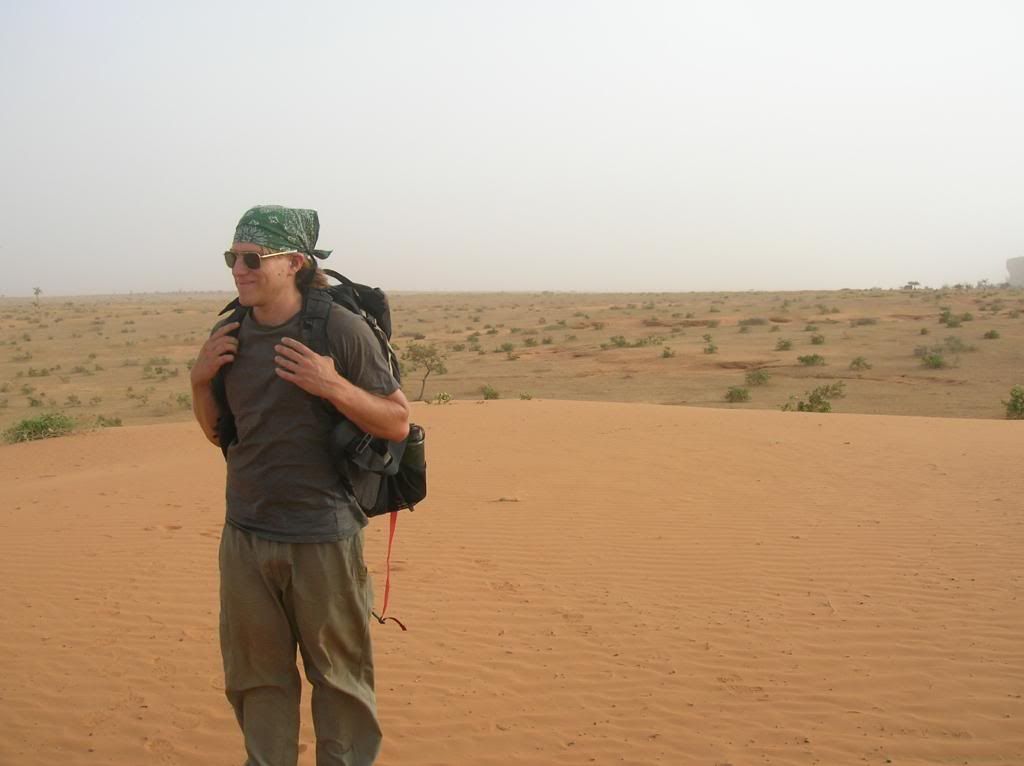
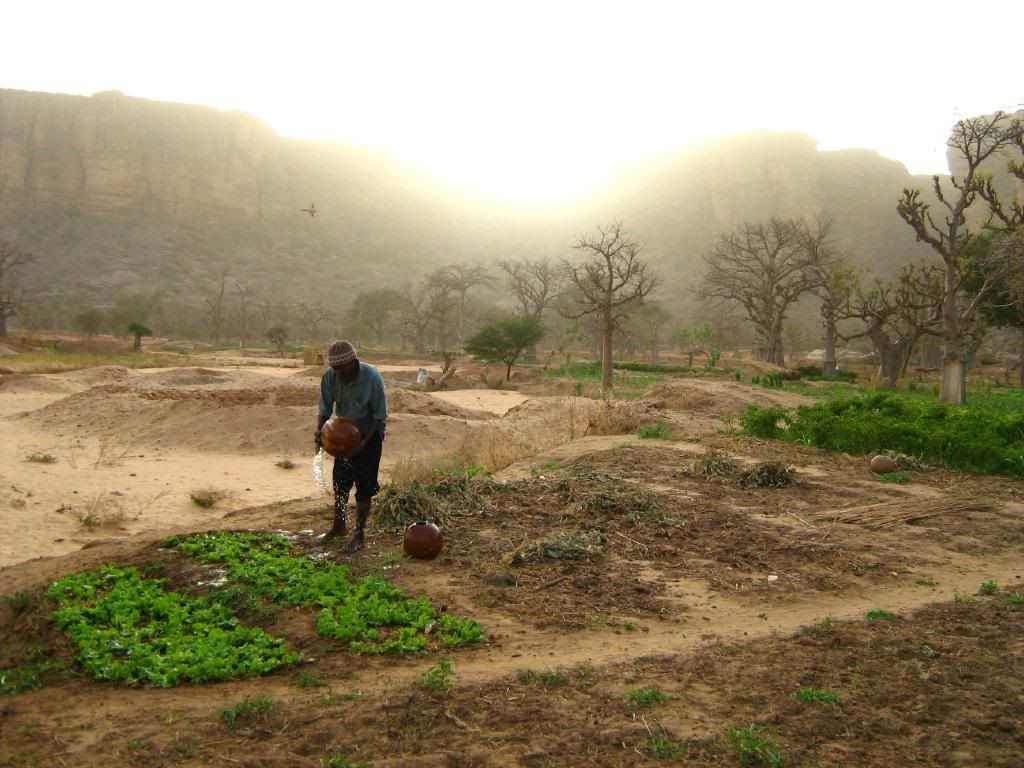
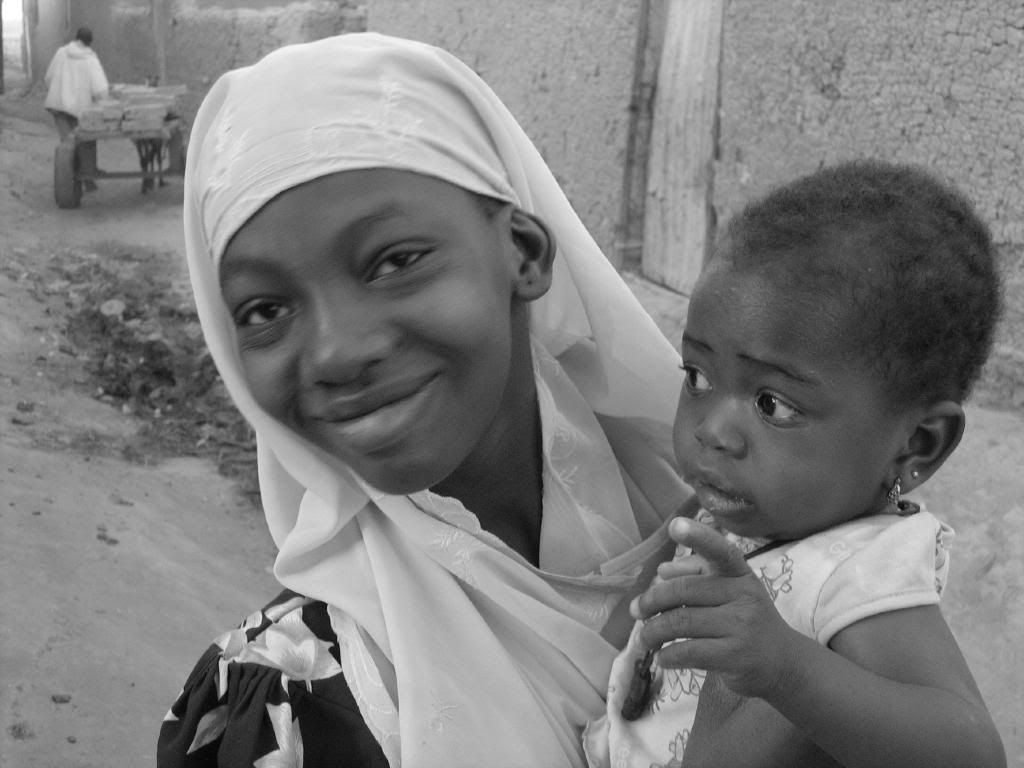
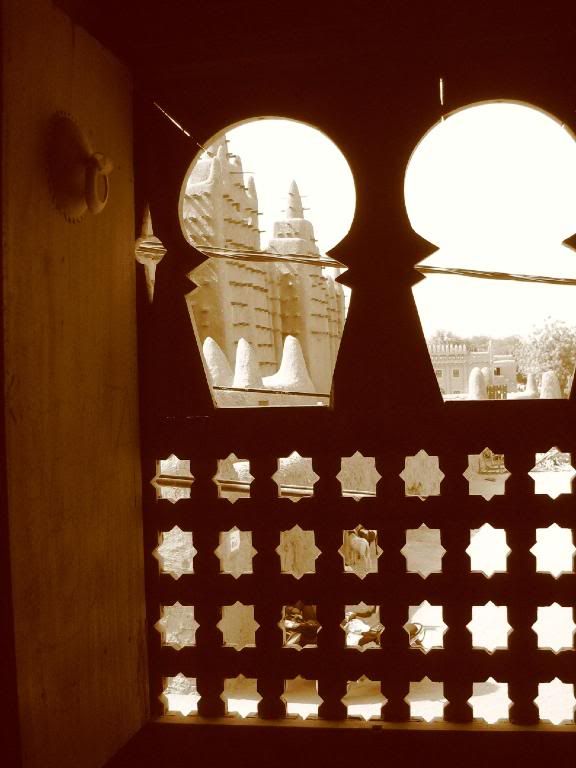 The world's largest mud mosque, seen through a house window in Djenne, Mali.
The world's largest mud mosque, seen through a house window in Djenne, Mali.